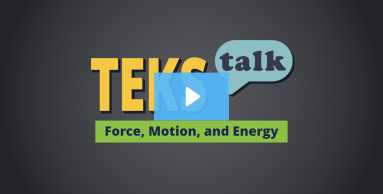
Knowledge and Skills Statement
Provide each pair of students with a ball of clay and two inflated balloons. Ask students to drop the ball of clay on their desks and make observations. Ask them to gently push the two balloons together and make observations. Student observations might indicate that the clay pushed on the desk and changed shape. Students should be guided to understand that the desk also pushed on the clay. If the desk had not pushed on the clay, it would have stayed a ball and pushed the desk all the way to the floor. Students should also recognize that the two balloons changed shape when they pushed on each other and then went back to their original shape when pulled apart. Students may discuss why the balloons went back to their original shape, but the clay didn't. Please note that students in grade 2 are not expected to discuss particles or molecules. A grade appropriate explanation would be that the air inside the balloon pushes it back to its original shape.
The further explanation is designed to be a resource for educators that helps them better understand the topic their students are learning. Further explanations may be written at a more complex level than would be expected for students at the grade level.
When two objects interact, each one exerts a force on the other. These forces can transfer energy between the objects. Forces between two objects at a distance are explained by force fields (gravitational, electric, or magnetic) between them.
When the forces acting on an object are balanced (equal in all directions), the motion of the object does not change. When the forces acting on an object are unbalanced (unequal in one or more directions), the motion will change, for example, by changing speed or direction.
